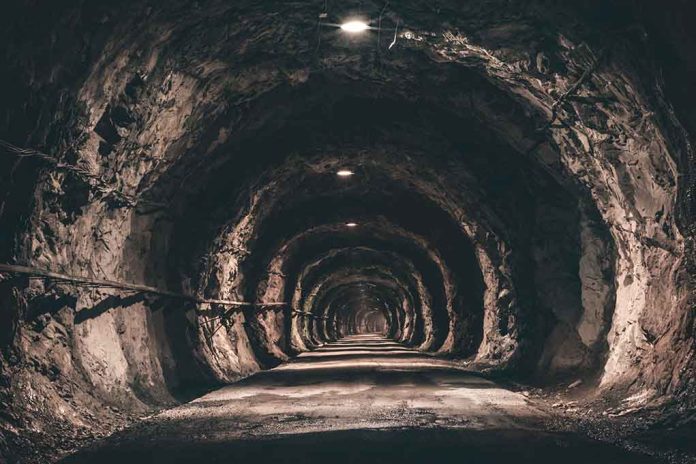
South African police tactics lead to 87 miners’ deaths in abandoned gold mine, sparking outrage and calls for investigation.
At a Glance
- 87 miners died following a police standoff at an abandoned South African gold mine
- Police retrieved 78 bodies in a court-ordered rescue operation, with 246 survivors rescued
- Authorities faced criticism for cutting off food and supplies to the miners
- Local leaders and political parties called for an independent inquiry into the government’s handling of the situation
- Illegal mining remains a significant issue in South Africa, with an estimated 6,000 abandoned mines
Tragic Confrontation Unfolds at Abandoned Mine
In a shocking turn of events, at least 87 miners have lost their lives following a standoff with police at an abandoned gold mine in South Africa. The incident has ignited a fierce debate over law enforcement tactics and the government’s approach to illegal mining operations. As details emerge, questions are being raised about the ethical implications of the police’s actions and the potential need for reform in handling such situations.
Standoff in South Africa ends with 87 miners dead and anger over police 'smoke them out' tactics https://t.co/Rh4ALmJ8lZ
— Bo Snerdley (@BoSnerdley) January 16, 2025
The tragedy unfolded at one of South Africa’s deepest mines, where illegal miners, known locally as “zama zamas,” had been working up to 2.5 kilometers underground since August of last year. Authorities estimate that nearly 2,000 miners were operating in the abandoned shaft before the confrontation began.
Rescue Efforts and Mounting Criticism
A court-ordered rescue operation retrieved 78 bodies and rescued 246 survivors. However, the response from authorities has come under intense scrutiny. Initially, police refused to assist, labeling the miners as “criminals.” This decision drew sharp criticism from community groups and trade unions, who accused the authorities of inhumane treatment.
The police’s tactics, which included cutting off food and supplies to the miners and allegedly removing ropes and dismantling a pulley system used by the workers, have been widely condemned. These actions likely contributed to the high death toll, with starvation and dehydration suspected as primary causes of death.
Community Response and Government Accountability
In the face of official inaction, community members took matters into their own hands. Volunteer rescuers assisted in the operation, as official personnel were not allowed due to safety concerns. The scale of the tragedy became apparent as decomposing bodies were pulled from the mine, some with notes pleading for food.
Local leaders and political parties have called for an independent inquiry into the government’s handling of the situation. The South African Federation of Trade Unions has questioned the humanity of the approach taken by authorities, highlighting the need for a more compassionate response to such crises.
Broader Implications for South African Mining
This incident sheds light on the larger issue of illegal mining in South Africa. With an estimated 6,000 abandoned mines across the country, the government faces significant challenges in addressing this problem. The miners, often undocumented foreign nationals, are frequently part of criminal syndicates, complicating law enforcement efforts.
During the operation, police seized gold, explosives, firearms, and over $2 million in cash from the miners. While these seizures highlight the lucrative nature of illegal mining, they also raise questions about the effectiveness of current policies in deterring such activities.
Sources:
Standoff in South Africa ends with 87 miners dead and anger over police’s ‘smoke them out’ tactics



